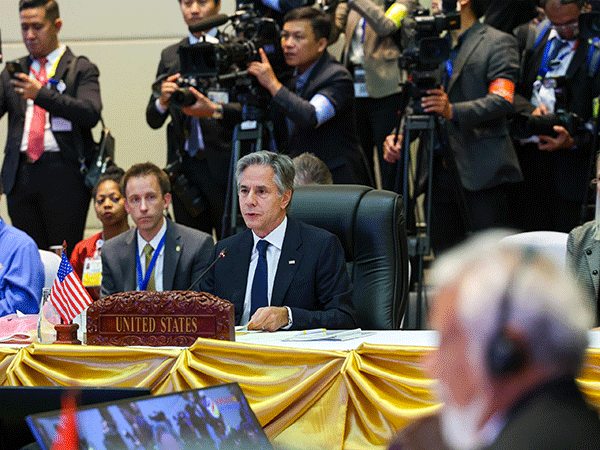US sharpens focus on ASEAN as strategic partner
The US-ASEAN relationship, built on decades of cooperation, is poised to grow even stronger, offering new opportunities for economic growth, innovation and sustainable development in an increasingly interconnected world.
At the 12th ASEAN-US Summit in Vientiane last Friday, leaders gathered to reflect on the robust and evolving relationship between ASEAN and the United States.
 |
US Secretary of State Antony Blinken addresses the 12th ASEAN-US Summit in Vientiane. |
In his opening address, Lao Prime Minister Sonexay Siphandone emphasised how ASEAN-US relations have blossomed across multiple sectors - political, security, economic, and socio-cultural. “This partnership will further contribute to ASEAN community building and the promotion of peace, stability and development cooperation.”
Representing the United States, Secretary of State Antony Blinken reiterated America’s unwavering support for ASEAN’s central role in regional cooperation.
“Over the past four years, the partnership between ASEAN and the US has grown stronger and more comprehensive than ever,” Blinken said.
After the summit, Blinken held a press conference and responded to various issues raised by the foreign media.
In his speech, Blinken highlighted the progress made since 2022, when President Biden pledged a “new era” in US-ASEAN relations.
Since then, the partnership has evolved into a comprehensive strategic relationship, expanding collaboration across longstanding areas such as economic cooperation and defence, while also exploring new initiatives in public health, clean energy, and women’s empowerment.
Blinken said “In our meetings today, we committed not only to growing this partnership but to continue to modernise it. For example, we’re working to implement the ASEAN single window. This is an initiative designed to make regional trade faster, cheaper, and more reliable by digitising customs and other essential forms. That initiative alone has cut transaction times by four days and saved over US$6.5 billion, with the ASEAN digital economy projected to surpass US$2 trillion by 2030.”
The summit also saw the adoption of a US-ASEAN leaders’ statement on artificial intelligence (AI), which aims to guide the safe and secure development of AI technology.
With a combined population of over 680 million people and a rapidly growing middle class, ASEAN represents a critical market for US businesses. This relationship has fostered significant job creation both in Southeast Asia and across all 50 states in the US, with more than 6,200 American companies operating in the region.
Blinken pointed out, “This shows the tremendous trust in the future, people don’t invest if they don’t trust the future.”
Beyond economics and security, the United States values its strong cultural and educational ties with ASEAN.
Blinken celebrated the 10th anniversary of the Young Southeast Asian Leaders Initiative (YSEALI), which has grown to include more than 160,000 members. To sustain this momentum, the US is doubling its investment in YSEALI and increasing the number of ASEAN Fulbright students studying in the United States.
Blinken also highlighted the shared focus on skills development, particularly in preparing ASEAN’s workforce for the 21st-century economy through educational initiatives, including an online platform offering courses in science, technology, and entrepreneurship.
Reporters attending the press conference raised the issue of growing geopolitical tensions. The problem of unexploded ordnance (UXO) clearance in Laos was also raised, with Secretary Blinken emphasising the United States’ persistent commitment to addressing this critical issue.
“This is an ongoing imperative and something we are deeply committed to,” Blinken said. “Over the years, we have provided nearly US$400 million to assist with UXO clearance. This funding has enabled the removal of a significant amount of unexploded ordnance, which has directly reduced the number of injuries and fatalities. However, this remains an ongoing challenge and a responsibility that we take very seriously.”
ByKeoxomphou Sakdavong
(Latest Update October 16, 2024)
|


